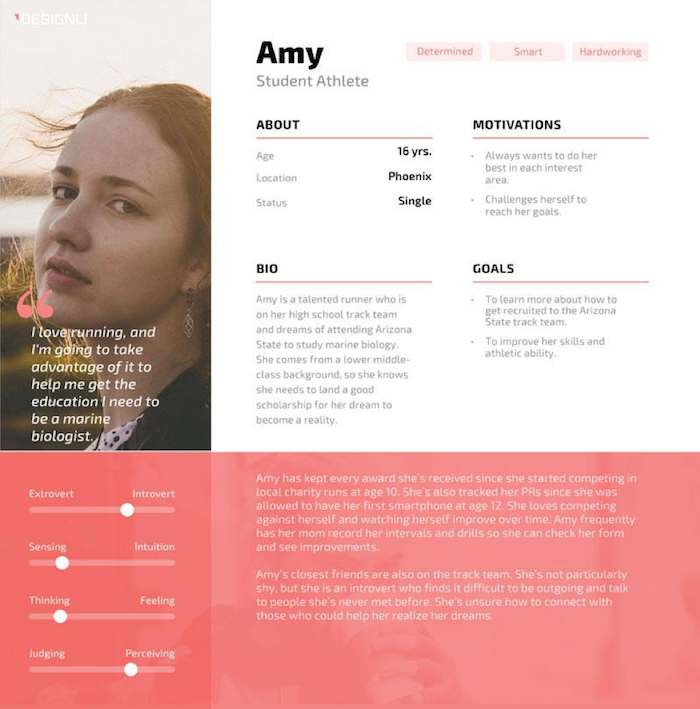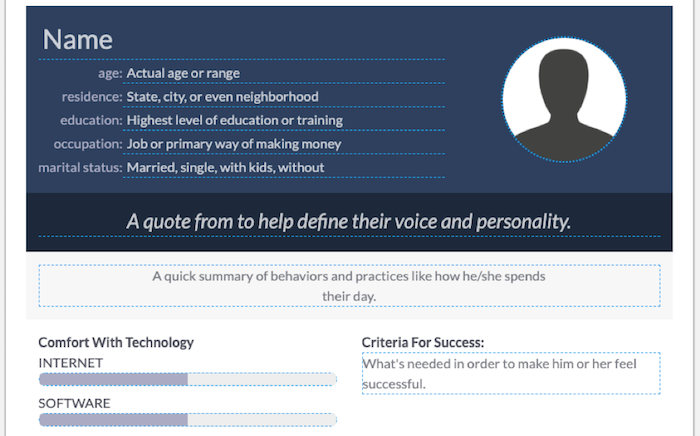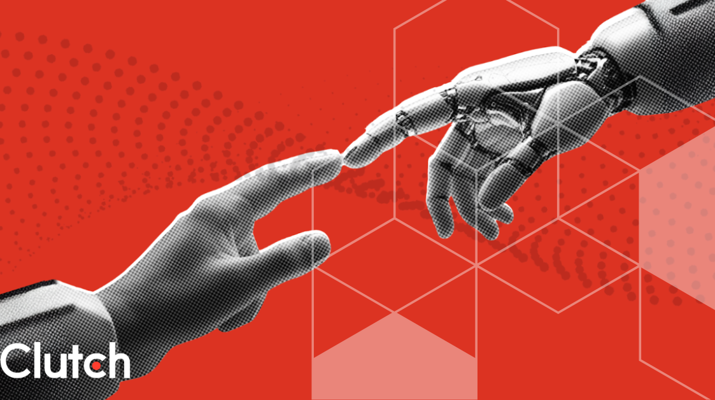![How to Create a Digital Marketing Budget [With Template]](https://img.shgstatic.com/clutch-static-prod/image/resize/715x400/s3fs-public/article/cbefcf801b6c486982d781482f9a654f.png)
![How to Create a Digital Marketing Budget [With Template]](https://img.shgstatic.com/clutch-static-prod/image/resize/715x400/s3fs-public/article/cbefcf801b6c486982d781482f9a654f.png)
Updated January 2, 2025
User personas are fictional characters that represent your product’s user types. Researching and creating the product’s user personas can help us know what features to prioritize, what functionality is essential, and how to build the interface.
Updated August 11, 2022
User personas are a tool to organize the information you have on your users. They also help everyone on the team visualize the users the product is intended for so their needs and requirements stay front and center.
Looking for a Digital Marketing agency?
Compare our list of top Digital Marketing companies near you
But user personas are only as valuable as the data they’re based on. In this post, we’ll explore what user personas look like, how to gather accurate data, what information to include, and four steps to building effective personas.
User personas look similar to marketing personas. They’re based on real data that describes each user’s goals, motivations, behaviors, and needs. Personas combine characteristics of all users in a particular segment to form a fictional representation of the user type.
Here’s an example of a user persona we created: Amy, a 16-year-old student athlete in Phoenix.

Amy is a talented runner on her high school track team and dreams of attending Arizona State University to study marine biology.
The information you include in your user personas will help you better understand your users. You’ll learn the context in which the user type is engaging with your product, the needs they have related to the product, and any requirements they have (such as software the user will need to integrate with).
Different types of personas provide a wide range of information for UX/UI design teams and marketing teams. With this additional information, they will understand more about users’ needs and be able to create
Types of Personas
Proto personas are easy to create because they’re based on existing data. They are often used to help teams collaborate and organize their assumptions about users to create actionable items.
However, they’re not always the best option for businesses because they’re not based on up-to-date research. Instead, teams create user personas based on what they believe they know about their users. As a result, they often reinforce erroneous assumptions.
Still, they’re an affordable and quick way for teams to brainstorm how they can design a platform with their users in mind.
Qualitative personas require more research than proto personas. Usually teams interview a small group of people and use a few characteristics to group similar users together. Then they create fictional presonas using the information they gathered.
The research involved makes this type of persona more accurate, but if teams don’t get a large enough sample size, the data can be skewed. Therefore, in order to gather enough data to create accurate user personas, teams must spend more time interviewing potential users.
Statistical personas are more scientific than even qualitative personas because they’re based on quantitative data. Rather than interviewing users, teams usually gather data through surveys to get a better understanding of the big picture.
Because the sample size is usually larger than interviews, they’re usually even more accurate, and therefore, more valuable to design teams.
However, companies must keep in mind that this type of research is more labor intensive and requires more resources than other methods.
It’s tempting to make assumptions about your personas, especially if you have a bit of experience with the user type. But making assumptions is a mistake.
If you get a persona wrong or misunderstand an important need or driver, you may end up with a mismatched product/market fit.
To gather accurate data, you can use two reliable methods: the survey and the interview.
Surveys are a great way to collect quantitative data.
To encourage participation, keep your survey short and focused on the most valuable information you need to uncover.
If your venture is new, you may not have an existing email list of people who fit the profile of your user type. In this case, you may be able to partner with a company that has a similar market.
Offer something the audience would value in exchange for participating — for example, an e-guide or a short educational email course.
One-on-one interviews allow you to dive deeper and collect qualitative data.
You can ask follow-up questions in interviews to learn why someone answered the way they did. It’s easier to uncover motivations and drivers in one-on-one interviews.
Again, to encourage participation, keep the interviews short. You’ll be surprised how much information you can collect in just 15 minutes.
Beyond your email list or the email list of a partner, you can find people to interview in social media groups based on industry, profession, or hobby.
It’s also valuable to observe people who fit your target user profile in their native environment. You’ll be able to get a feel for their workflows, other tools they use, and the environment you need to build for.
For example, if your users will be in a loud factory while using your product, you won’t want to rely on sound.
To prevent building features users don’t want, and leaving out features they need, take the time to conduct enough research that you’re confident in your personas’ data.
After you’ve completed your research, you’ll likely have collected a hefty amount of data on your users. It’s easy to get lost in data that’s interesting but not applicable to building your product.
Focus on the information that will help inform development. User personas should include the following:
Personas typically follow a naming convention based on user type.
For example, your Platform Admin persona might be named “Platform Admin Andy.” Including the user type in the name will help you remember which type the persona represents.
What’s your persona’s backstory? What does their typical day look like? What do they do in their free time? This information will give insight into the context in which they’ll be using your product.
Also, include demographics such as age, gender, location, income, marital status, and any other relevant information.
Including a quote is another way to help you get more familiar with the persona.
What would this persona say about their goals and challenges? How would they react to your product? You can collect quotes directly from your research.
Although individual users within a type will have differing personalities, they often share certain traits.
It can be helpful to know if the persona is typically introverted, detail-oriented, impulsive, etc. Note any traits that you frequently found in your interviews.
What do your personas aspire to? What are they working toward in their careers and personal lives? What do they need from a solution like the one your product provides?
This section will be especially valuable as you’re building out your product.
What drives your personas? What’s preventing them from reaching their goals? Uncovering motivations and frustrations will help you better understand how your personas think and what drives their behaviors.
This information will give you a clear picture of exactly who you’re building your product for and what they want and need out of the product.
Using a step-by-step process to build your user personas will help you move through the project in an organized way. These four steps will provide a structure for the work involved.
Before you start the project, map out your plan of action. Identify the personas to create, the tools you’ll use, the questions you’ll ask in your survey and interviews, the list of people you’ll target, etc.
Take the time to map out your approach and to be crystal clear about what you want to achieve. What tools will you use? Who will you survey? Who will you interview? What questions will you ask? Where will you go to observe users in their native environments?
Finalize your survey and interview questions, taking care not to ask leading questions that will throw off your responses.
Open-ended questions give people the ability to use their own words and accurately describe their thoughts. Gather research until you start seeing patterns develop that indicate a common characteristic among the group.
Put all your data into a spreadsheet and start looking for themes that are specific and relevant.
Organize your data into categories that will make it easy for you to create your personas, such as demographics, goals, pain points, etc.
Use your spreadsheet data to create your personas. A variety of tools exist that will help you design your persona cards, such as PersonaGenerator (pictured below).

To write your personas’ backstories, review the responses to your open-ended questions. You’ll need to use some creativity here, but the bios you write should be representative and based on real data.
Once you create your personas, you’ll have a clear picture of your user groups and feel confident that they’re accurate and reliable.
Using data-driven personas to make strategic product development decisions will help you build a better product.
Because your process will focus on your users, you’re more likely to end up with a product that resonates with your intended users.
![How to Create a Digital Marketing Budget [With Template]](https://img.shgstatic.com/clutch-static-prod/image/resize/715x400/s3fs-public/article/cbefcf801b6c486982d781482f9a654f.png)

